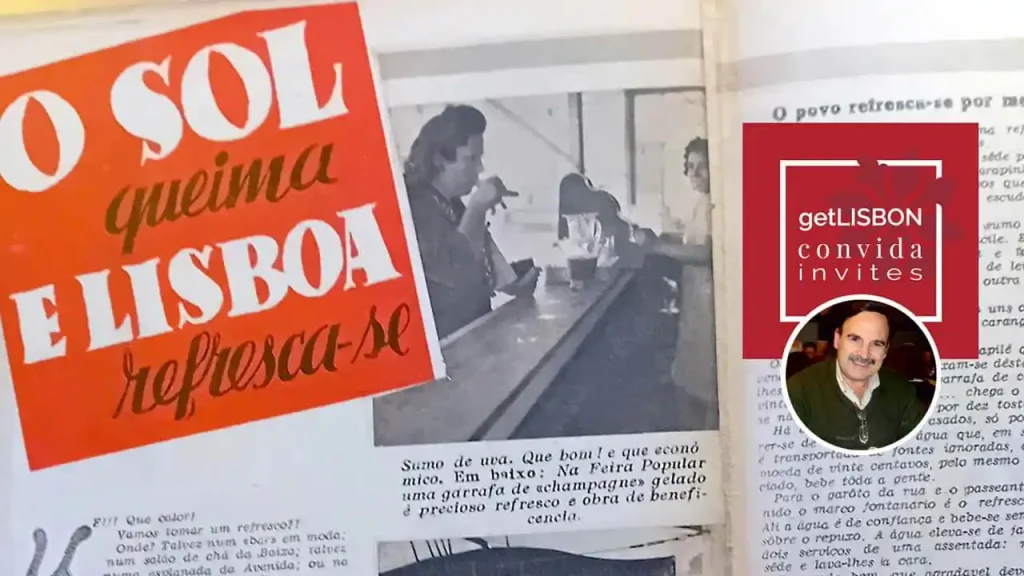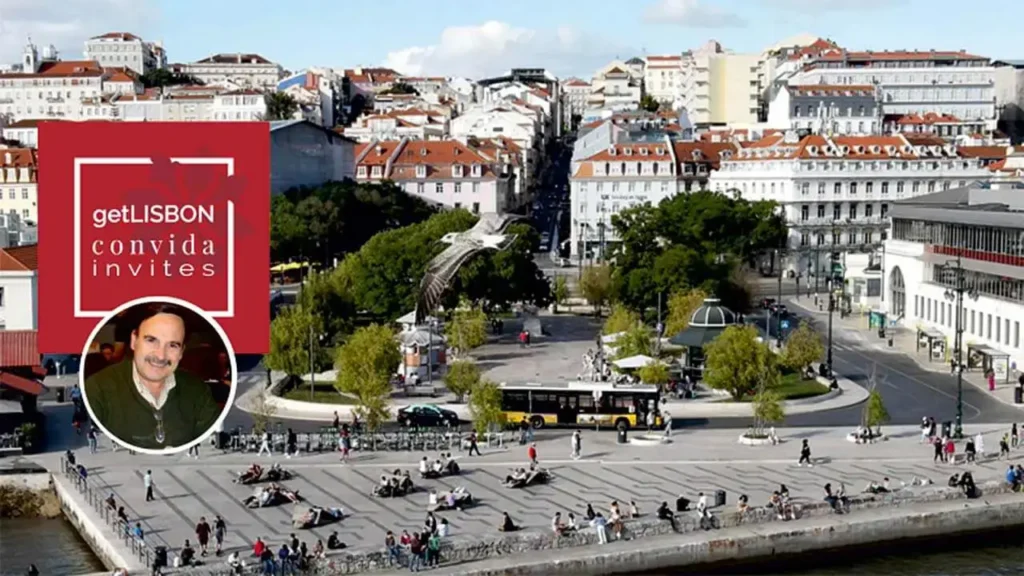In this article on ice creams and refreshments – most fitting for the hot summer we are experiencing – Luís Bayó Veiga takes us on a journey to a past both near and distant, where we discover, or recall, Lisbon’s consumer habits.
It was between the late 19th century and the early 20th century that the consumption of ice creams and refreshments – whether natural or sweetened carbonated drinks – became widespread, establishing themselves as part of Lisbon’s habits for coping with the summer heat.
Today, traces of ice and snow live on in the names of establishments, such as the old Café Gelo (now Gelo Cervejaria e Marisqueira), or in advertisements carved into the city walls, like the reference to snow on a corner of Rua da Prata, where Pomona once stood…
Commercial brands of ice creams and refreshments shaped generations and, though many have since disappeared, they remain alive in the memory of older residents, in photographs and in press advertisements of the time.
Snow, Sorbets and Ice Creams
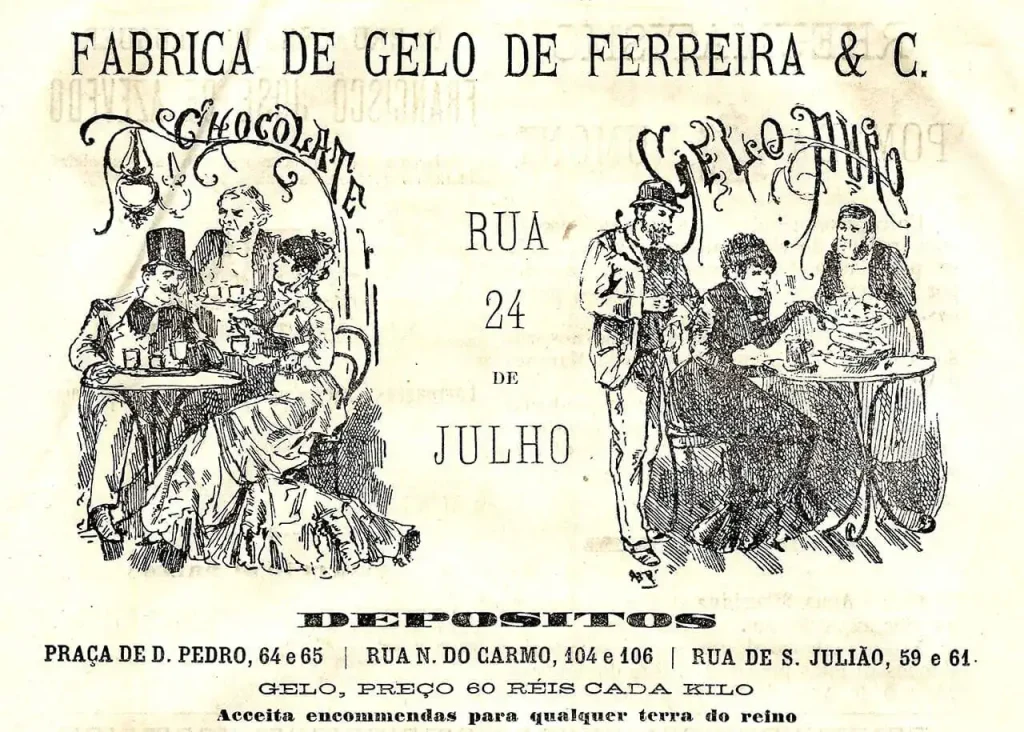
At a time when industrial ice production did not yet exist, natural snow and ice were already being used in places where snow did not fall, such as Lisbon.
From the 17th century, this product was transported to the capital from the Serra da Estrela and Serra da Lousã. In the mid-18th century, the Royal Ice Factory was built in the Serra de Montejunto, a site which still preserves its snow and ice collection tanks and storage chambers, specially designed for prolonged conservation.
The snow and ice, transported down the Tagus in traditional boats, reached Lisbon where they were used for medicinal purposes in hospitals and for the preparation of ice creams and drinks.
This was a complex process, which made it an expensive commodity, beyond the reach of most pockets. It was mainly consumed at the Royal Court, in the homes of the wealthier families, or in renowned establishments such as Martinho da Arcada in Terreiro do Paço – also known as the “House of Snow” – and later at Café Gelo in Rossio, Casa Ferrari in Chiado, or Pomona in Rua da Prata.
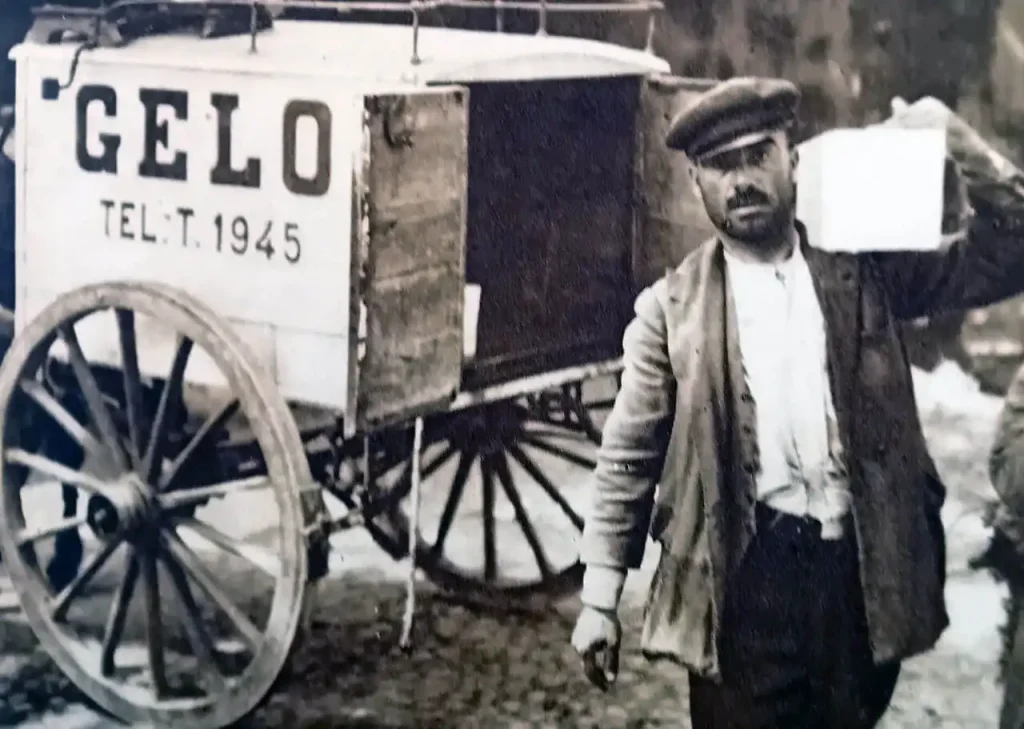
Initially known as “snow” and later popularly called “sorbets”, ice creams were prepared by mixing snow with fruit juices and sugar, resulting in a chilled refreshment that only later evolved into the form we know today with the introduction of milk.
The great transformation came in the 1930s with the advent of ice cream factories in Lisbon. One of the first artisanal factories was located near Arco Cego, on Rua Dona Estefânia, called A Sibéria, which launched the brand Esquimaux, soon adapted into Portuguese as Esquimó.
This factory was among the first to introduce lollies and wafer cones, sold both on site and through itinerant vendors with their legendary white iceboxes on tricycles, boldly marked with the word Esquimaux…
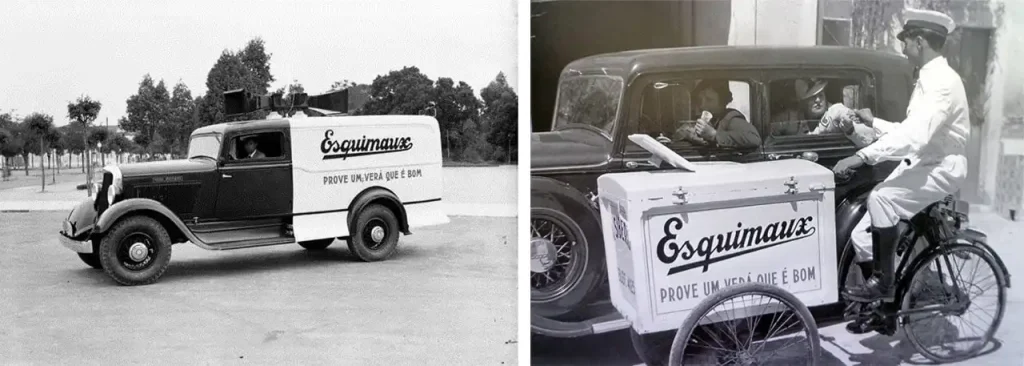
So popular did the brand Esquimaux/Esquimó become that it lived long in the nostalgic memories of people of Lisbon, even serving as the theme for a Revista Portuguesa (Portuguese-style revues) entitled Esquimó Fresquinho (“Fresh Eskimo”), premiered on 16 July 1949 at the Teatro Maria Vitória in Parque Mayer.
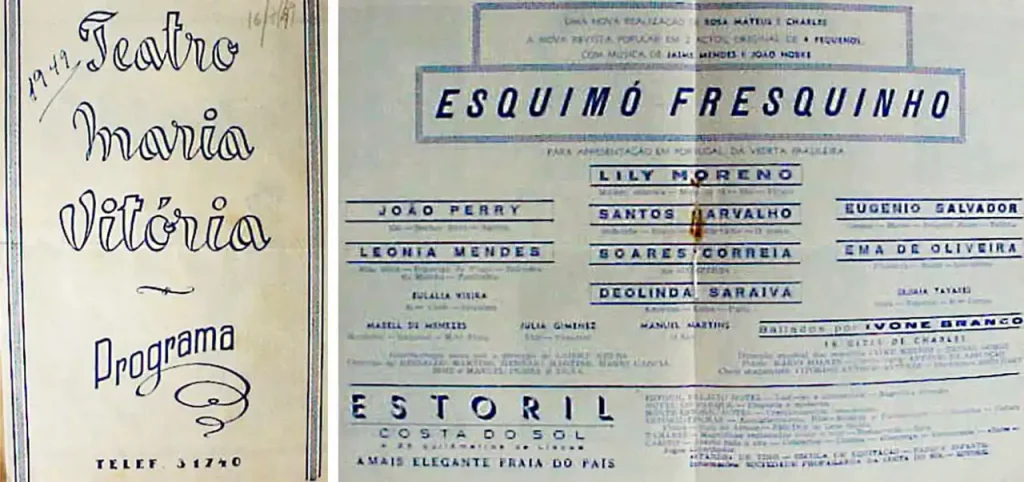
Around the same period, two other ice cream brands also enjoyed great popularity: Nevado and Iceberg.
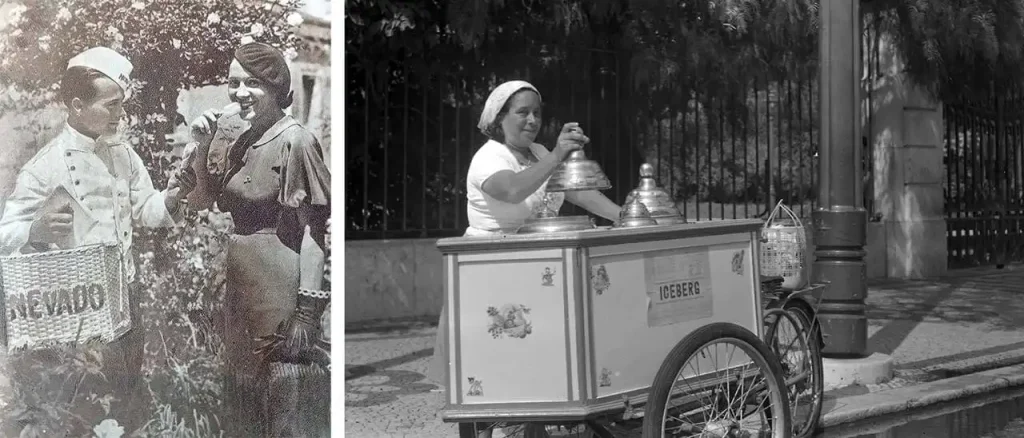
At the same time, the first Italian ice cream shops began appearing in Lisbon, introducing innovative machines and recipes that helped popularise consumption.
The most notable was A Veneziana, the first to open in 1936, tucked into a corner of Praça dos Restauradores, and still in operation today.
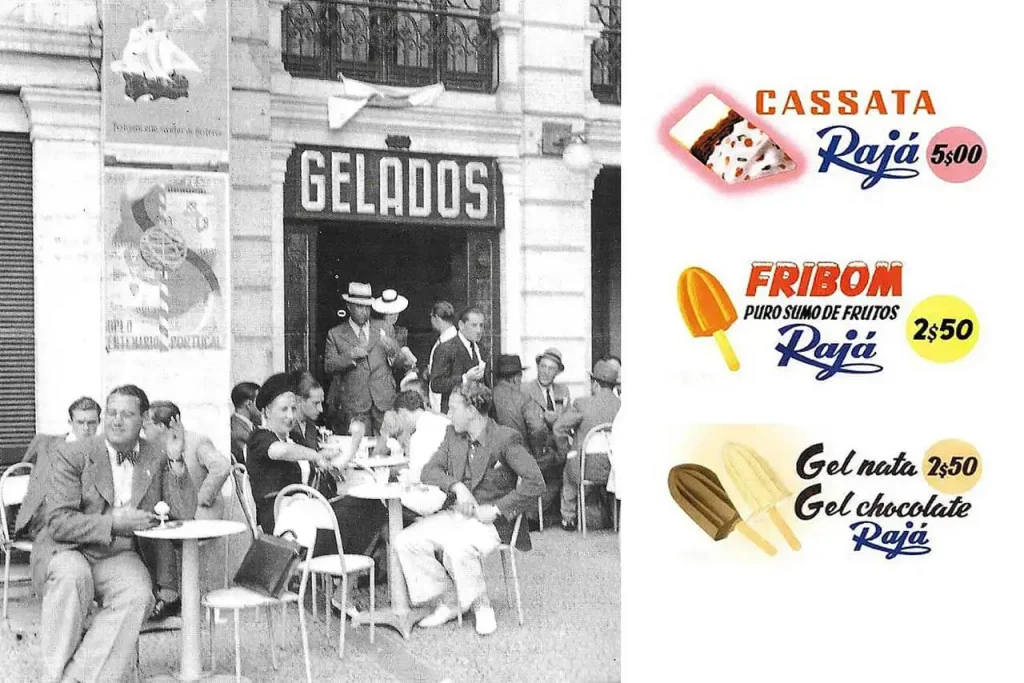
Over time, ice cream sales during the summer season spread throughout the city, with new factories appearing and new varieties and formats being launched.
In 1958, the itinerant sale of loose ice creams was banned, clearing the way for the emerging large industries to take over the market.
One of the first industrial ice cream brands, founded in Lisbon in the 1950s, and which, although now gone, remains forever in people of Lisbon’s memories, was the iconic Rájá.
Until then, in the summer heat, the old cry of the ice cream seller could still be heard across the city: Esquimó fresquinho! But soon a new sing-song call took over: Olhó Rájá fresquinho! and the expression “let’s have a Rájá” replaced “let’s have an ice cream”.
In the 1970s and 80s, new ice cream shops opened in Lisbon’s fashionable districts, such as Alvalade. Eating ice cream in a cup with a small wooden spoon, later replaced by plastic ones, became a real trend, evidenced by the queues that would form outside these establishments.
Water, Refreshments and Soft Drinks
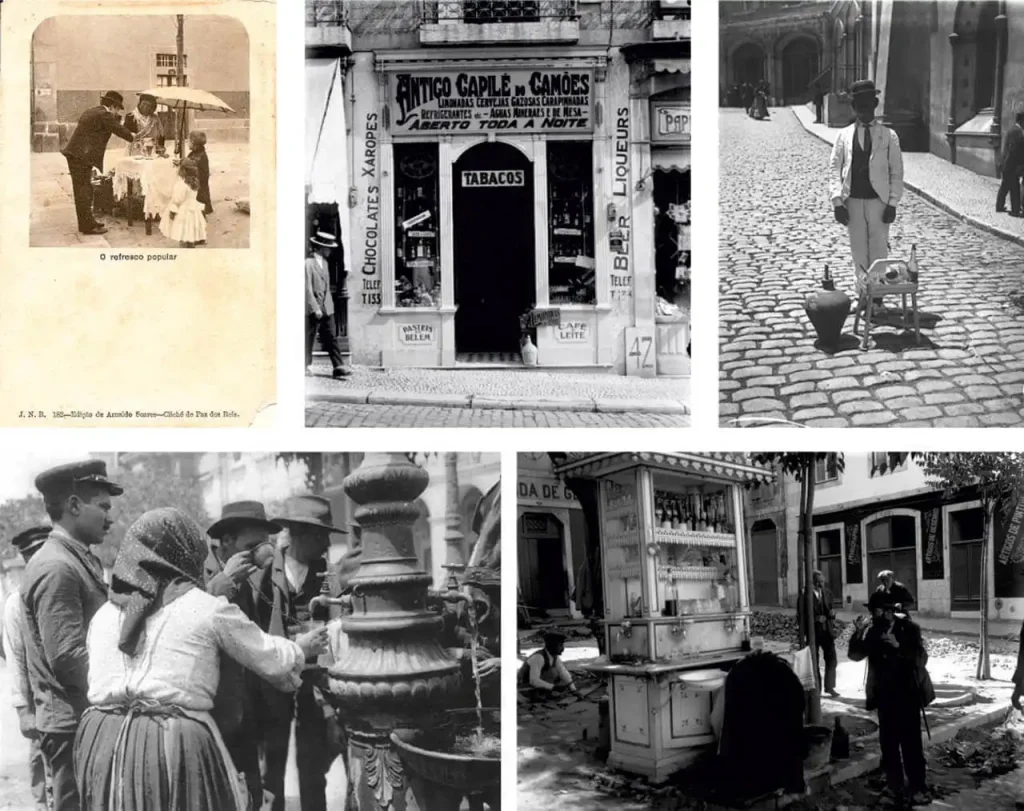
Water, available from fountains, public spouts and even trough-fountains for animals, quenched the thirst of all, including the humblest. These facilities, spread throughout the city, supplied water carried by water-sellers for household use or sold by the glass.
Mineral waters from Caneças, Sintra and Moura – famed for their beneficial properties – were also marketed in the capital. Perhaps the most famous point of sale was Tabacaria Mónaco, still present in Rossio, which kept them in clay jars that preserved them cool and flavoursome.
Drinks were sold both by street vendors and in establishments such as cafés, small taverns, eateries and kiosks – a constant presence in Lisbon’s streets. To fight thirst and heat, people of Lisbon turned, besides wine and beer, to typical homemade refreshments such as mazagran (coffee, lemon and ice), capilé (made from maidenhair fern leaves), currant cordial, lemonade and other concoctions based on natural syrups, cool water and ice.
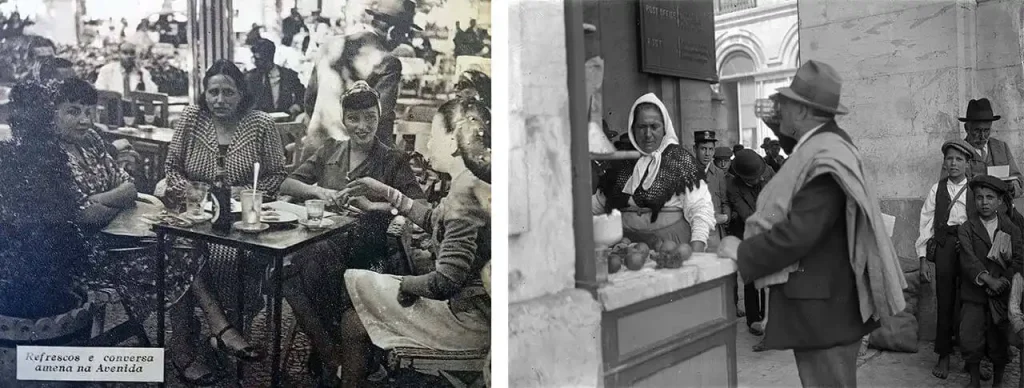
The first soft drink produced and marketed in Portugal was Laranjada Madeirense, launched in 1872. Another fondly remembered drink was Laranjina C, dating from the late 1940s, which achieved huge success thanks to its iconic citrus-shaped bottle.
Equally popular were sodas of various brands, sold in bottles sealed with a glass marble stopper – the unforgettable pirolitos, a delight for children.
Even today, the pleasure of savouring on a terrace an ice cream or a refreshment – such as a good lemonade, a capilé or, though now more forgotten, a currant cordial – still endures. These drinks are sold mainly in Lisbon’s kiosks, but also available as concentrated syrups in bottles to take home, displaying beautiful nostalgic labels that evoke both affection and Lisbon’s popular tradition.
The author thanks getLISBON for their collaboration in preparing this article.
| Never miss another article | Subscribe here |
Also read
– The Area of Cais do Sodré, Origin and Experiences
– The Elegant Chiado of the Glove Shops
by this author.

Luís Bayó Veiga
Curious and Lisbon lover, where he was born in 1948. Lives in Almada.
Collector of old Portuguese Comics and Illustrated Postcards about Lisbon, with thousands of items in his collections. He also has a significant collection of books, newspapers, magazines and supplements relating to the city.
Author of some books on memories and local history of Cacilhas and Almada. Co-author of more than a dozen documentaries on aspects of old Lisbon in multimedia support.
Member of the Grupo dos Amigos de Lisboa.
Assiduous attendee of conferences, colloquiums and others, organised by several public and private entities, in the scope of Lisbon studies.
Has a degree in Chemical Engineering from IST and two post-graduates from ISCTE.

